
Inspiring Germany
Pure Nature: 12 Relaxing Places Close To German Cities
Where do the locals who live in German cities go to relax? These are some of the green oases close to the city where you can relax and enjoy yourself.
Berlin: strolling contentedly through Babelsberg
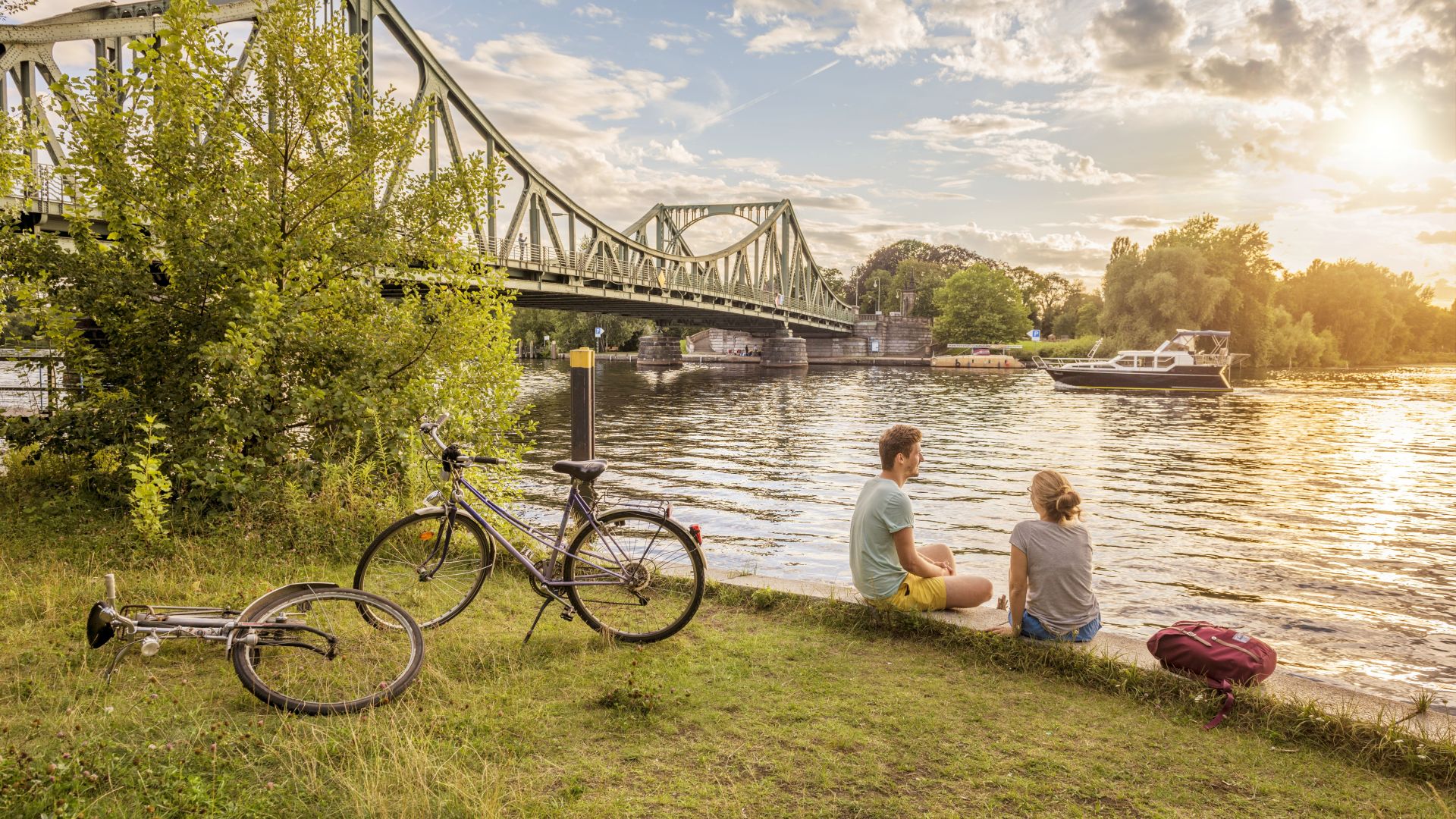 Berlin: Fahrradtour zur Glienicker Brücke
©visitBerlin (Dagmar Schwelle)
Berlin: Fahrradtour zur Glienicker Brücke
©visitBerlin (Dagmar Schwelle)
Berlin is thrillingly exhausting, even the locals know that. On weekends, they relax in the surrounding countryside, for example in Potsdam. Potsdam borders on Berlin and is beautifully situated on the Havel River. Here you can take a long walk across the Glienicke Bridge towards Babelsbergpark. It is part of the UNESCO World Heritage Site. Lovers like to visit the spot under the courthouse garden. In winter, you can even sledge down the hill from the castle garden. Also very nice is the nearby Wannsee Düppel which offers swimming in the summer.
Berlin: Neu-Venedig (New-Venice)
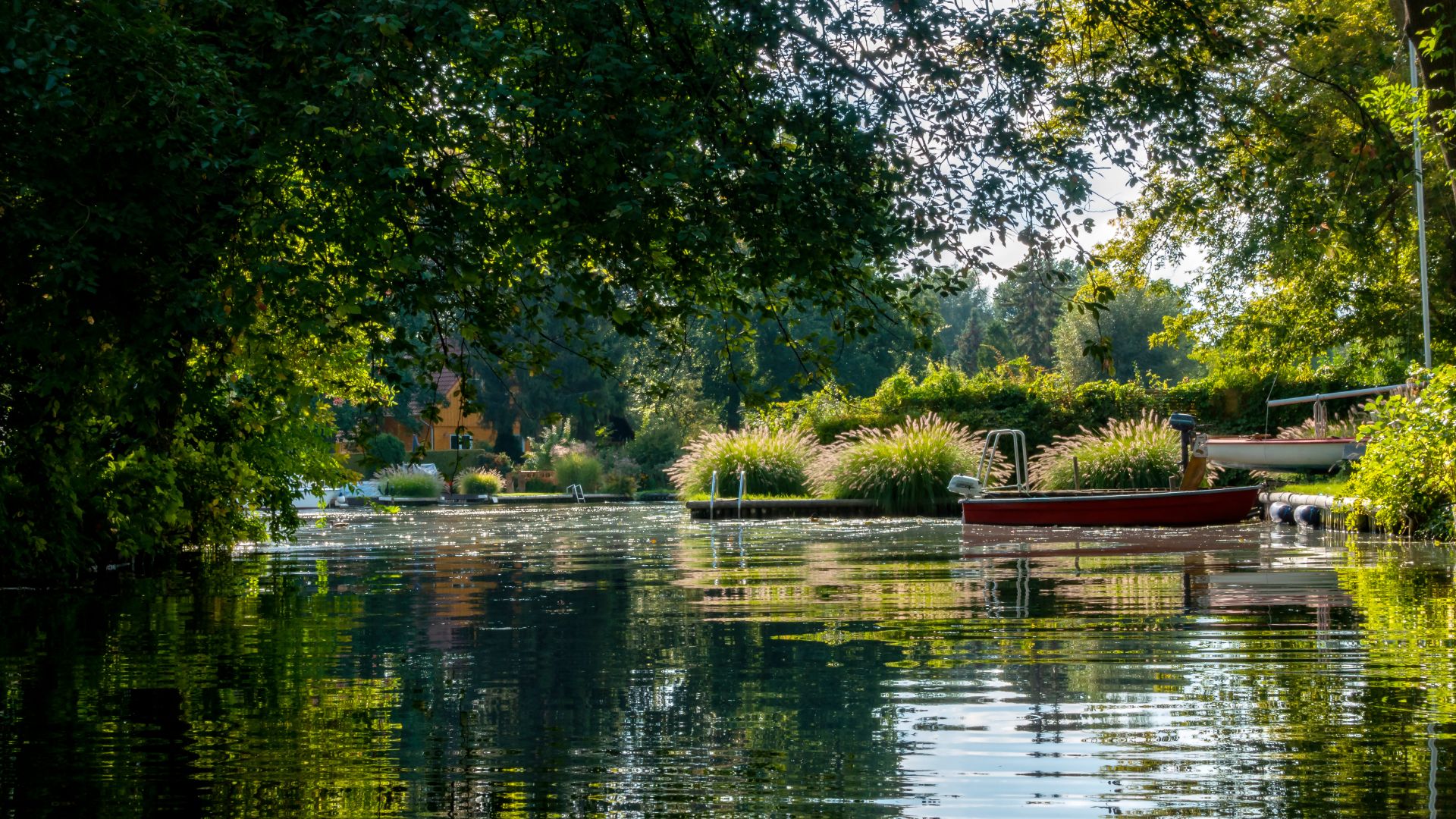 Berlin: Neu-Venedig an Kanälen der Müggelspree
©Adobe Stock (spuno)
Berlin: Neu-Venedig an Kanälen der Müggelspree
©Adobe Stock (spuno)
Oh, Berlin. The city just offers so much. In the south-east in Köpenick, for example, you will find the idyllic residential estate of Neu-Venedig (New-Venice); here the Müggelspree river branches out into canals. It is very pretty, and charming to look at. And not only that: between Müggelsee and Dämeritzsee you can explore the area by bike, canoe or small boat.
Hamburg: Boberger Niederung Nature Reserve
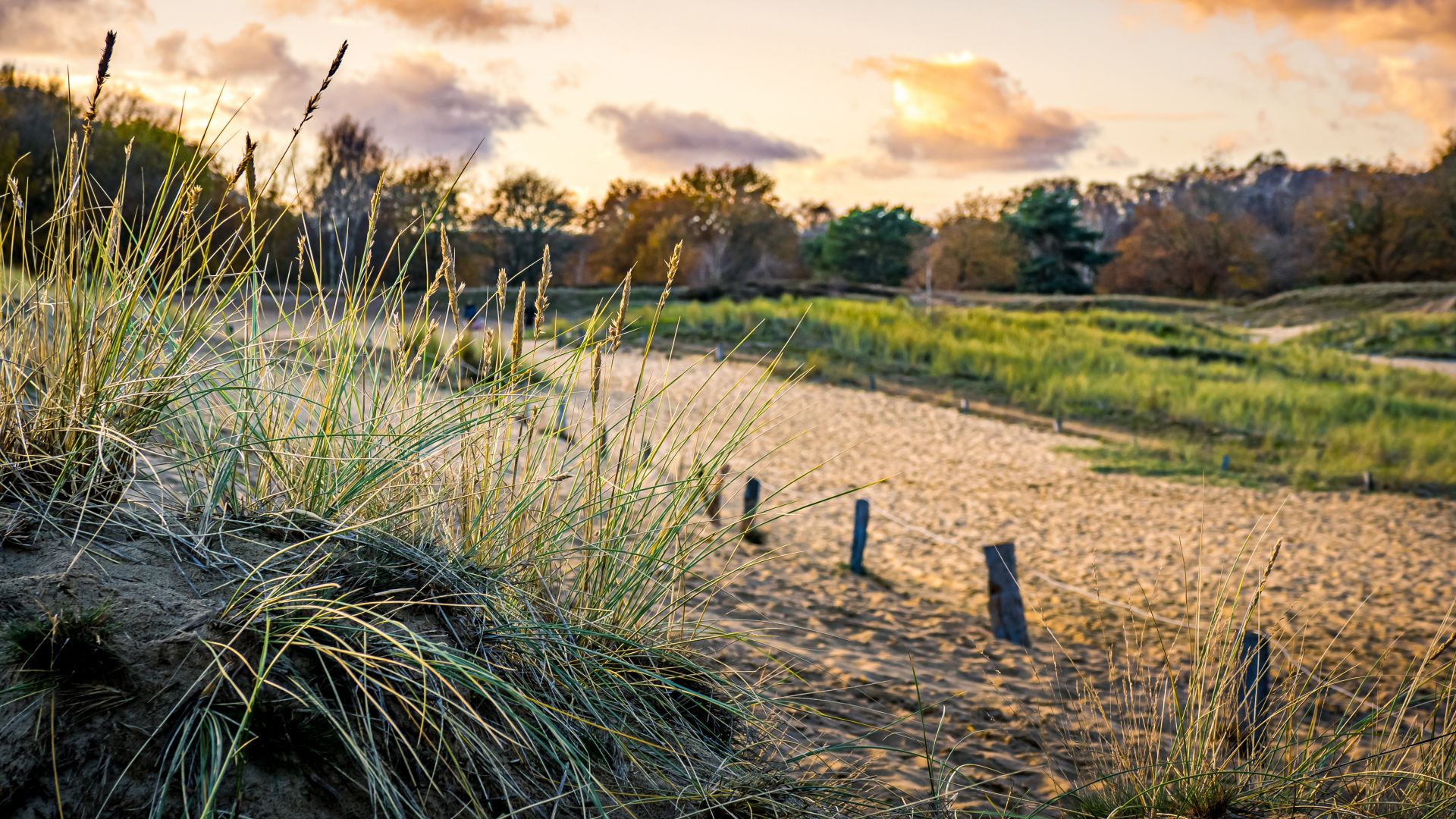 Hamburg: Sunset in the dunes of the Boberger Niederung nature reserve
©Adobe Stock (Kris Hoobaer)
Hamburg: Sunset in the dunes of the Boberger Niederung nature reserve
©Adobe Stock (Kris Hoobaer)
It is Hamburg's very last dune, the Boberger Düne in the Boberger Niederung nature reserve. This remnant of the Ice Age is home to rare animal species and a popular destination for nature lovers and families. The whole area is beautiful, however, because it is home to one of the Hanseatic city's most species-rich green spaces, with moorland, dune, heathland and marshland on 350 hectares. And, how great is this: in summer you can swim in a lake there, while in winter you can go tobogganing.
Dresden: The Vineyards of Radebeul
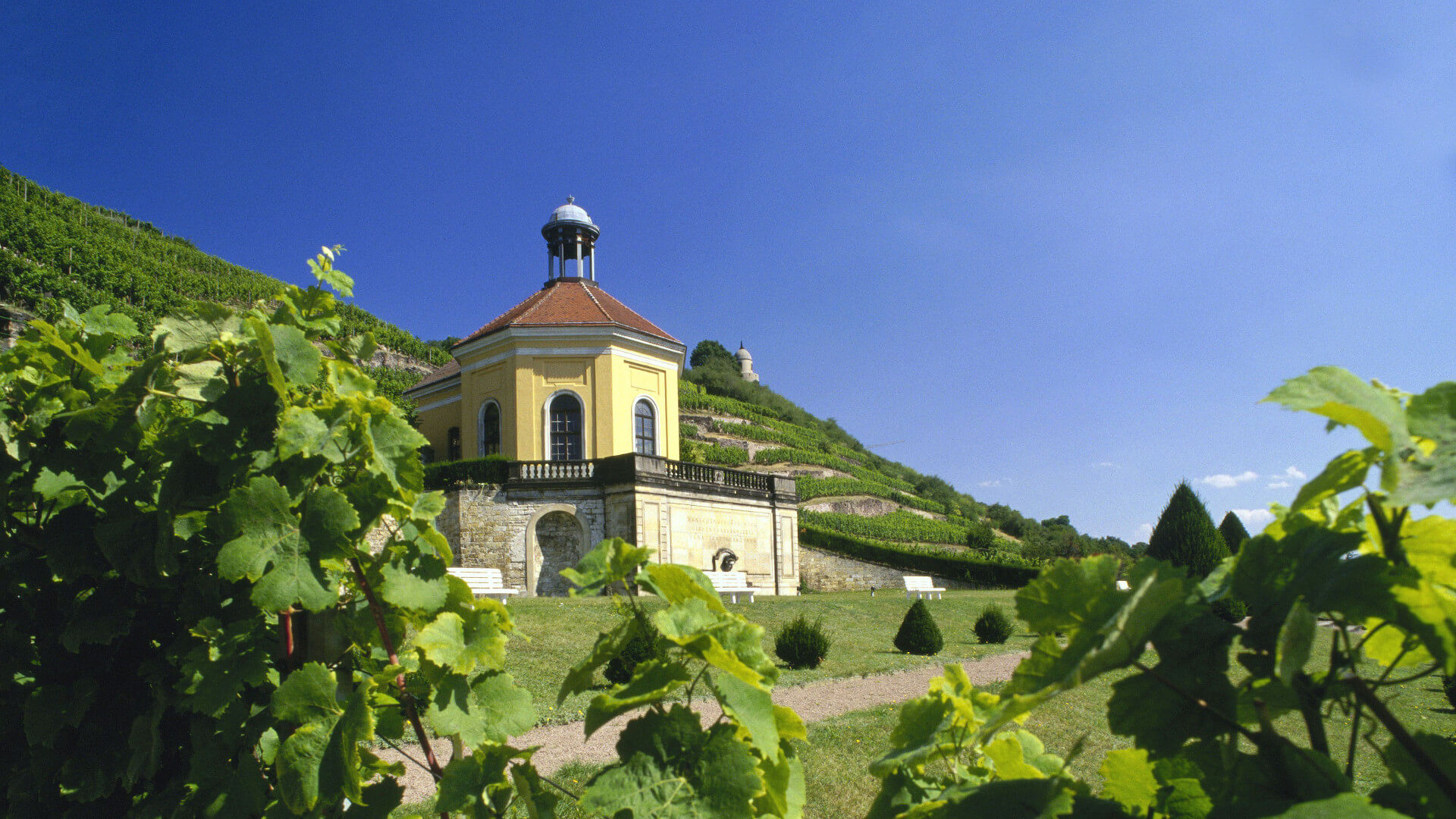 Radebeul: The wine-growing area Saxony
©Deutsches Weininstitut GmbH (DWI)
Radebeul: The wine-growing area Saxony
©Deutsches Weininstitut GmbH (DWI)
If you like wine, you should definitely take a trip to the vineyards of Radebeul/Meissen: here you will find countless wineries as well as Wackerbarth Castle, which is well worth seeing, offering beautiful hiking routes and dreamlike views of the Elbe Valley.
Halle: Schochwitz Castle in Salzatal
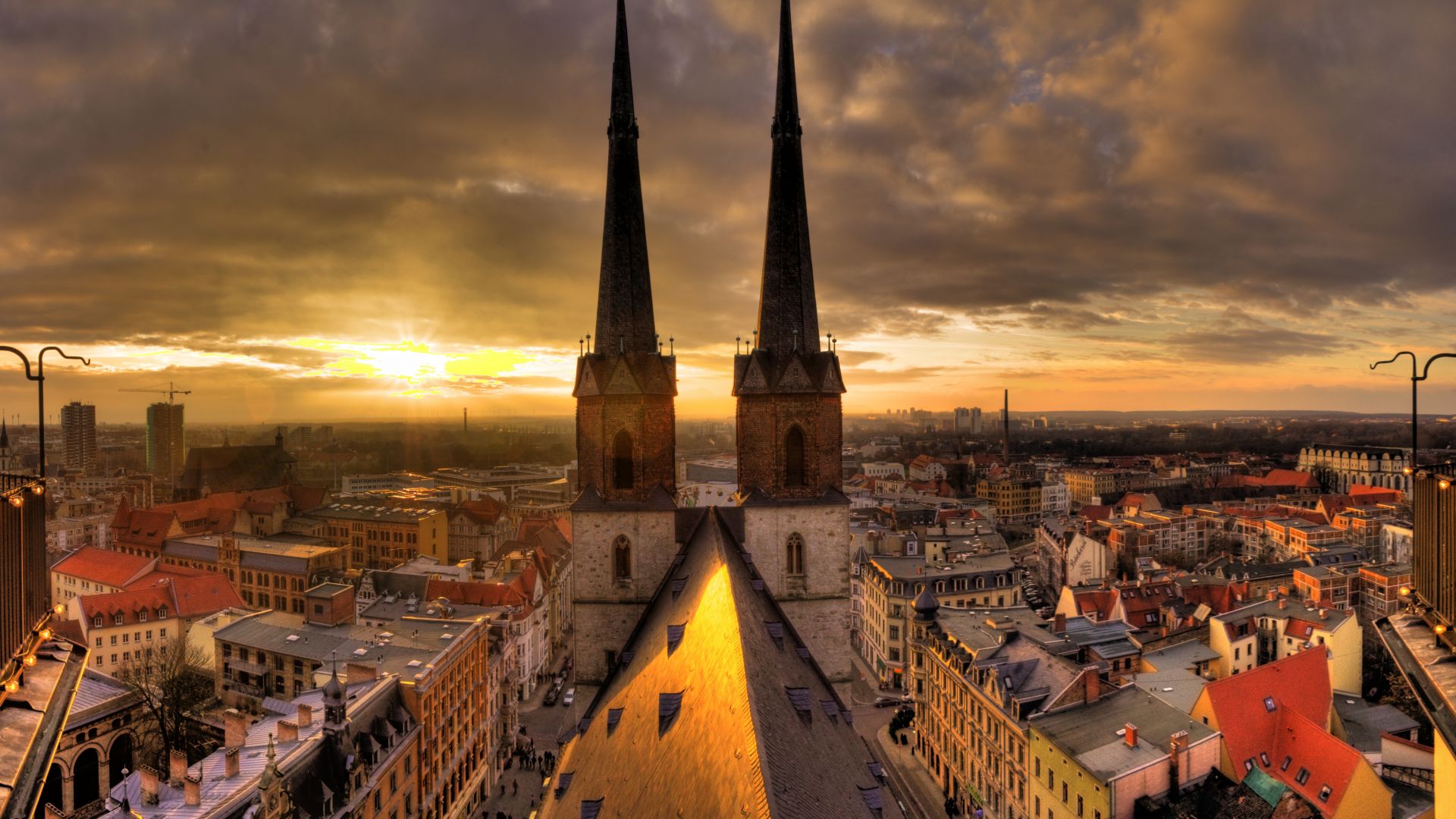 Halle/Saale: Stadtpanorama mit Hausmannstürmen der Marienkirche
©gettyimages (Sven Dressler)
Halle/Saale: Stadtpanorama mit Hausmannstürmen der Marienkirche
©gettyimages (Sven Dressler)
Not far from Halle and directly on the beautiful river Saale: here lies the small and pretty town of Schochwitz with its castle of the same name. Those who walk up to it are rewarded with a magnificent view, with the Saale as the focal point. A stroll through the countryside and along the river is also definitely worthwhile - on foot or by bike.
Leipzig: Sachsenbrücke and Auwald
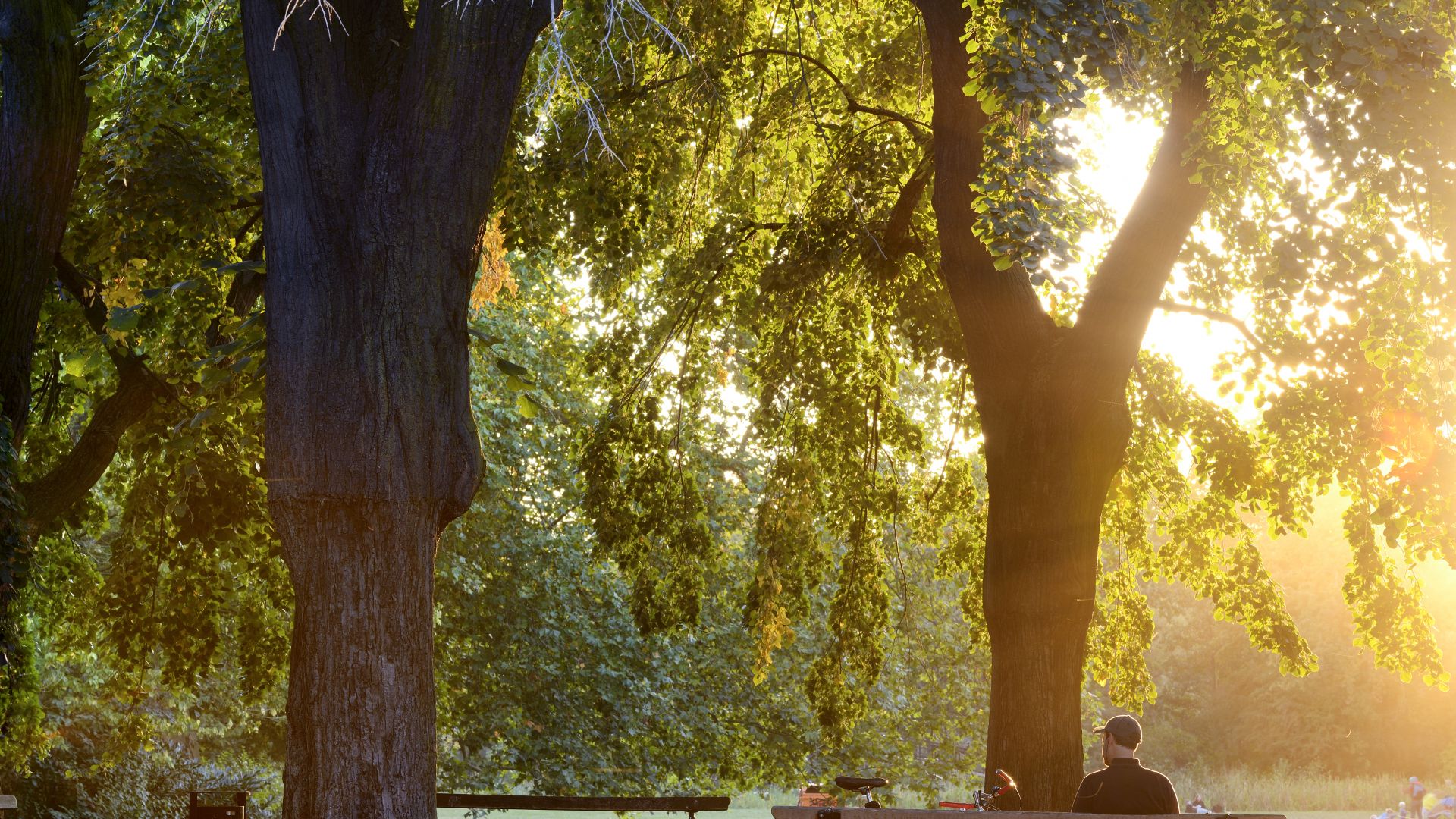 Leipzig: Man sitting on a bench in the park
©DZT (Francesco Carovillano)
Leipzig: Man sitting on a bench in the park
©DZT (Francesco Carovillano)
Leipzig's Clara Park with Sachsenbrücke is crossed by the Elster riverbed and is exceptionally pretty. It's a meeting place for young Leipzigers, and for families in particular. Artists and musicians can also be found here between May and October. Also worth a trip: the Wackelturm in the riparian forest, with a breathtaking view of Leipzig and the huge riparian forest below.
Frankfurt: Schwanheimer Dunes
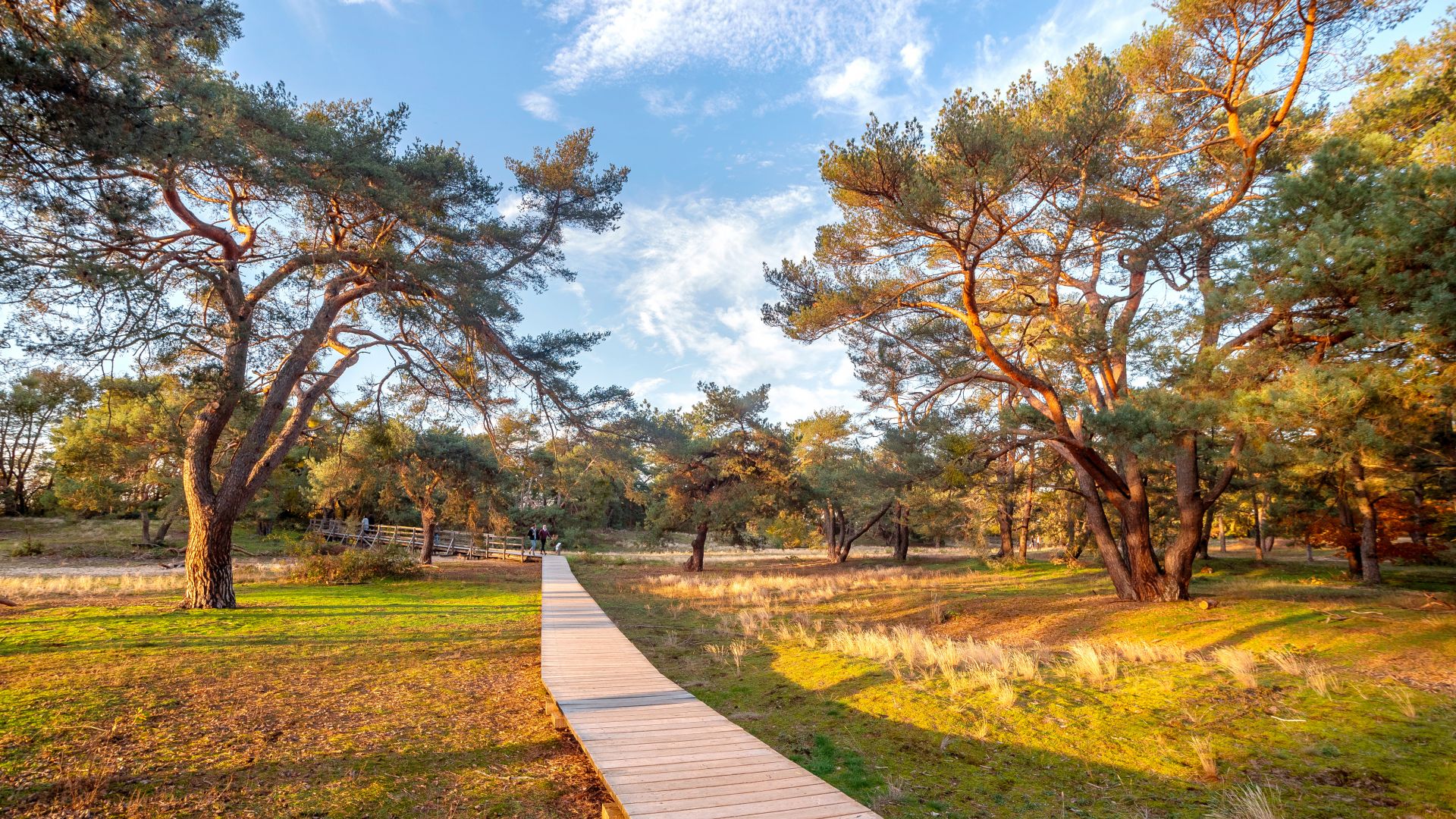 Frankfurt: Schwanheimer Düne nature reserve
©Adobe Stock (helmutvogler)
Frankfurt: Schwanheimer Düne nature reserve
©Adobe Stock (helmutvogler)
These rank among the favourite places of Frankfurt's nature lovers: the Schwanheim Dunes. And that's not surprising, because the almost 60-hectare nature reserve is also one of Europe's very rare inland dunes. There is a Mediterranean feel to the landscape and rare birds also nest here. Tip: visit the Schwanheim Dunes at any time of year, but not in the summer. This is when many people from Frankfurt arrive to enjoy the beautiful nature that surrounds the village. At all other times of the year, however, the impressively beautiful place is practically empty but just as magical.
Mecklenburg Lake District: Ivenacker Eichen Park
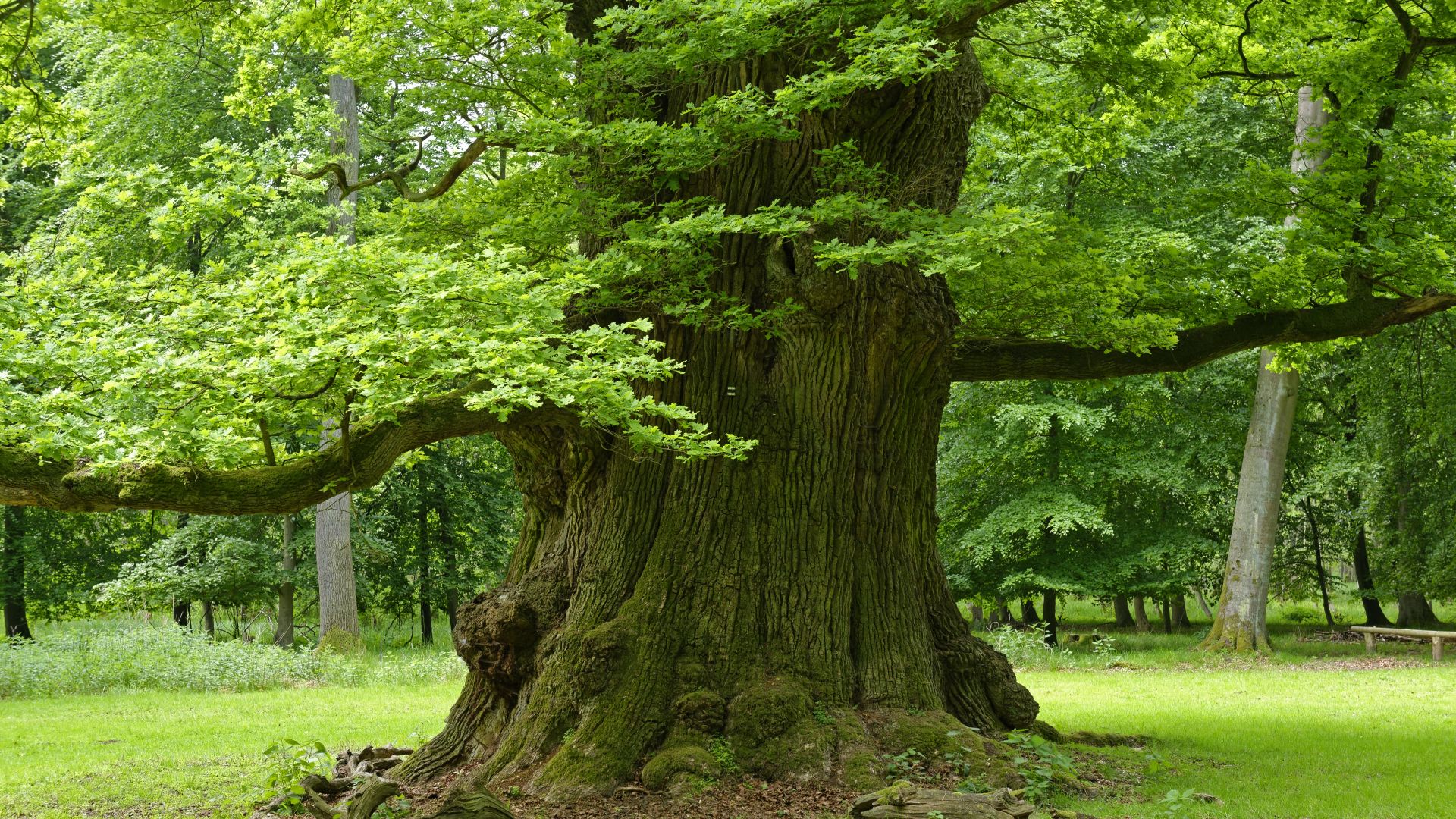 Ivenack: Ivenack Oaks
©Getty Images (Westend61)
Ivenack: Ivenack Oaks
©Getty Images (Westend61)
The small town of Stavenhagen lies between Rostock and Szczecin. The most impressive trees in the country - the Ivenack oaks - are not far away. They are among the oldest trees in Germany - some are up to 1000 years old. It is an impressive experience to see them, yet at the same time they have something peaceful about them. Wild horses also live in the forest park with an animal park, and a treetop trail is available. So: let's go there.
Duisburg: Six Lakes Plateau
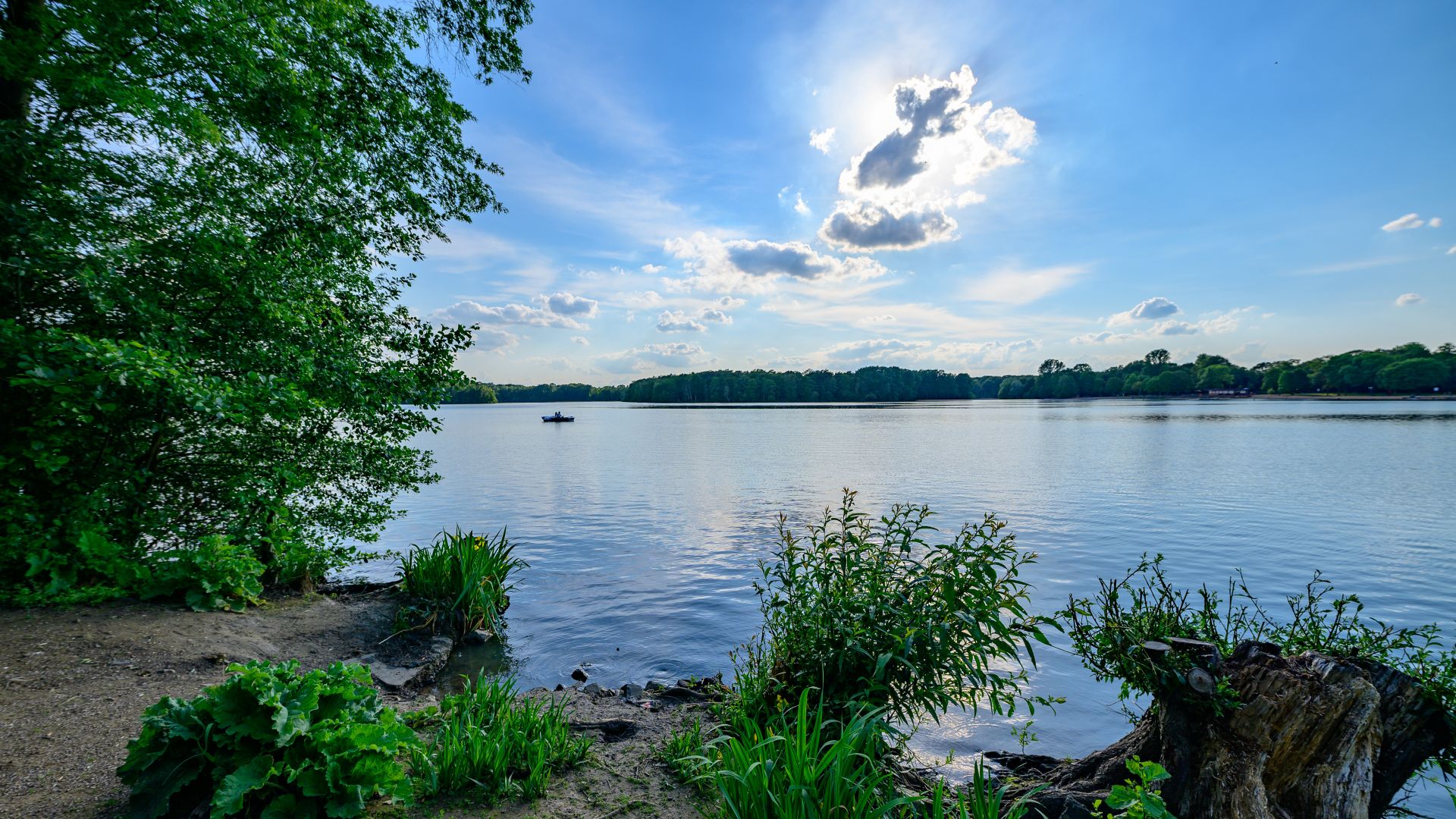 Duisburg: Six Lakes Plateau
©Adobe Stock (Christopher)
Duisburg: Six Lakes Plateau
©Adobe Stock (Christopher)
There are many things to experience in the Ruhr region, including one of the largest ports in the country. If you want a little time out from all the impressive culture, head for Duisburg's Six Lakes Plateau recreation area. Here you can swim, enjoy water sports, barbecue and take long walks through the forest. Another nice thing to do: people watching.
Baden-Baden: Ruins and Rocks
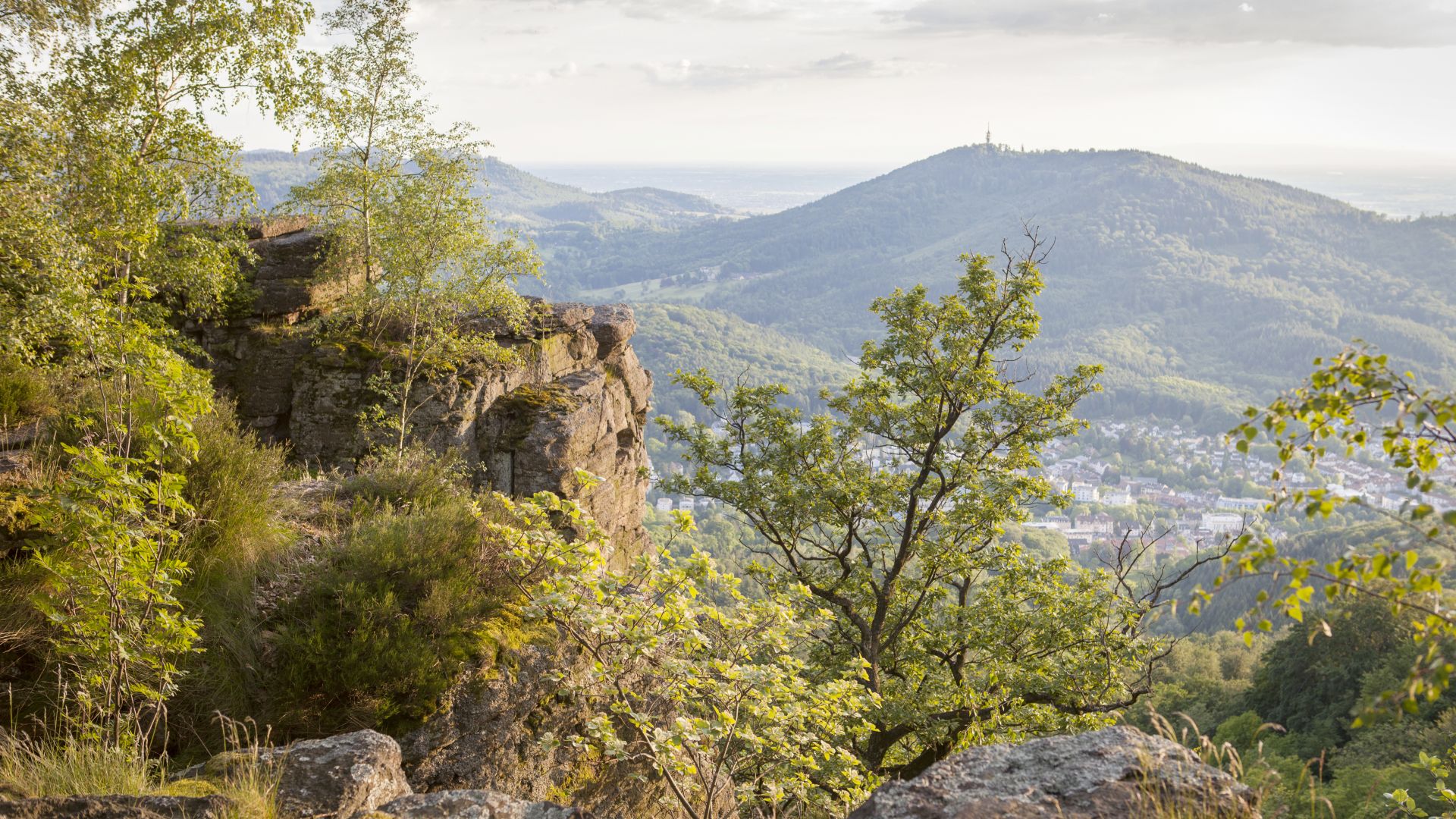 Baden-Baden: Battertfelsen
©Baden-Baden Kur & Tourismus GmbH
Baden-Baden: Battertfelsen
©Baden-Baden Kur & Tourismus GmbH
Many people take the cable car to the local mountain Merkurberg, but the view from Battertfelsen is much more romantic. Why not first explore the extensive ruins of the old castle "Burg Hohenbaden" and then hike to the cliff. The view from the Ritterplatte viewing platform far into the Rhine plain is particularly beautiful.
Maximilian Grotto near Nuremberg
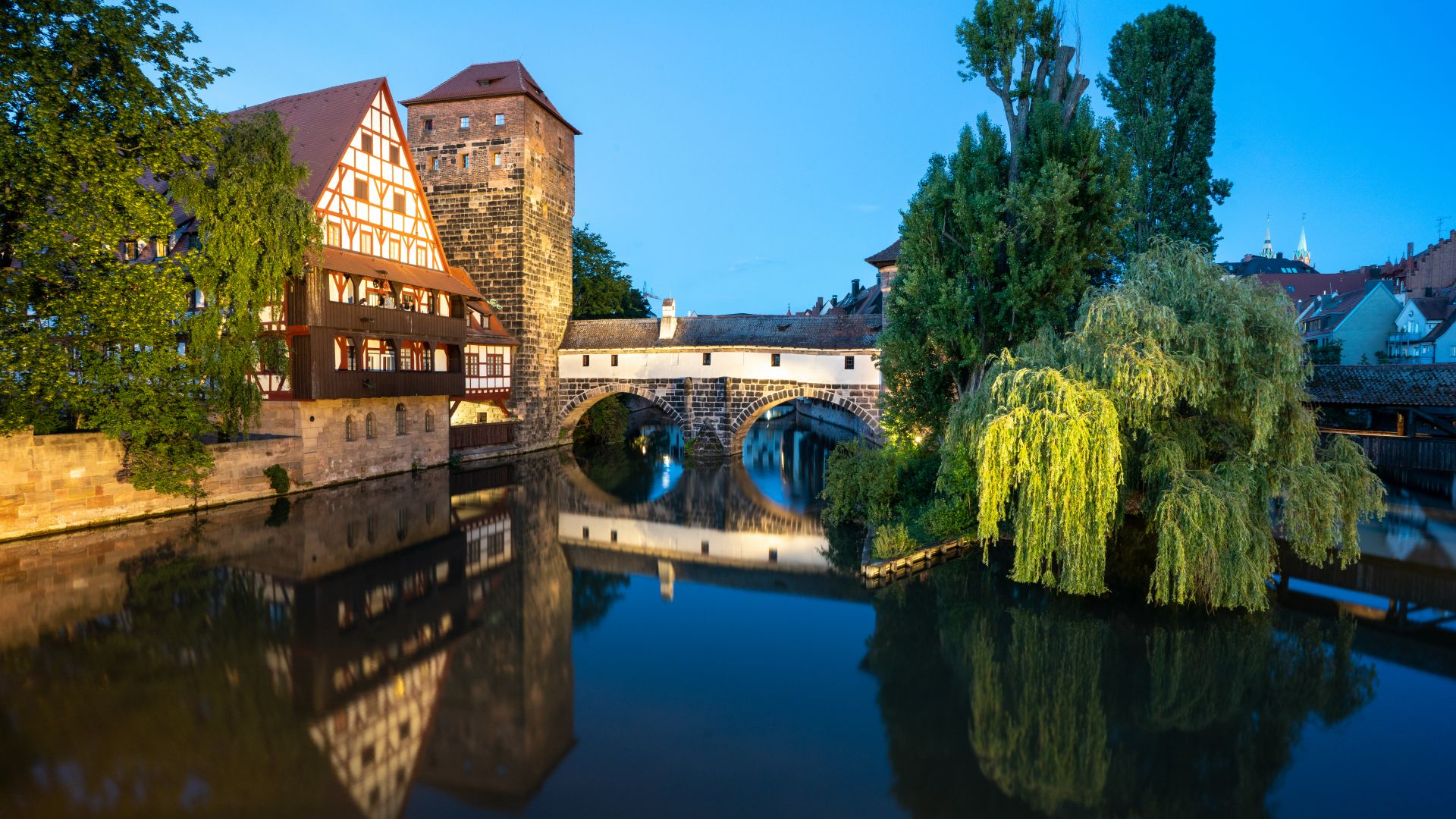 Nuremberg: Hangman's bridge with wine tavern on the river Pegnitz
©DZT (Andrea Hitzemann)
Nuremberg: Hangman's bridge with wine tavern on the river Pegnitz
©DZT (Andrea Hitzemann)
This show cave in the Nuremberg region is located in the Franconian Switzerland Nature Park and is part of the Jura Cave Adventure World. The stalactite cave is 1.2 kilometres long, its highest point is at 70 metres, and its deepest point is 70 metres below the earth's surface. Crossing the branching corridor system is exciting, especially because of the alternating smaller and larger halls. The kids are going to love it. In other words, it's a great way to feel a bit spooky together. But the nature park itself also offers a rich variety of activities: in the spring you can enjoy the flowering cherries and in late summer you can help with the cherry harvest.
Bremen: Weser Island Harriersand
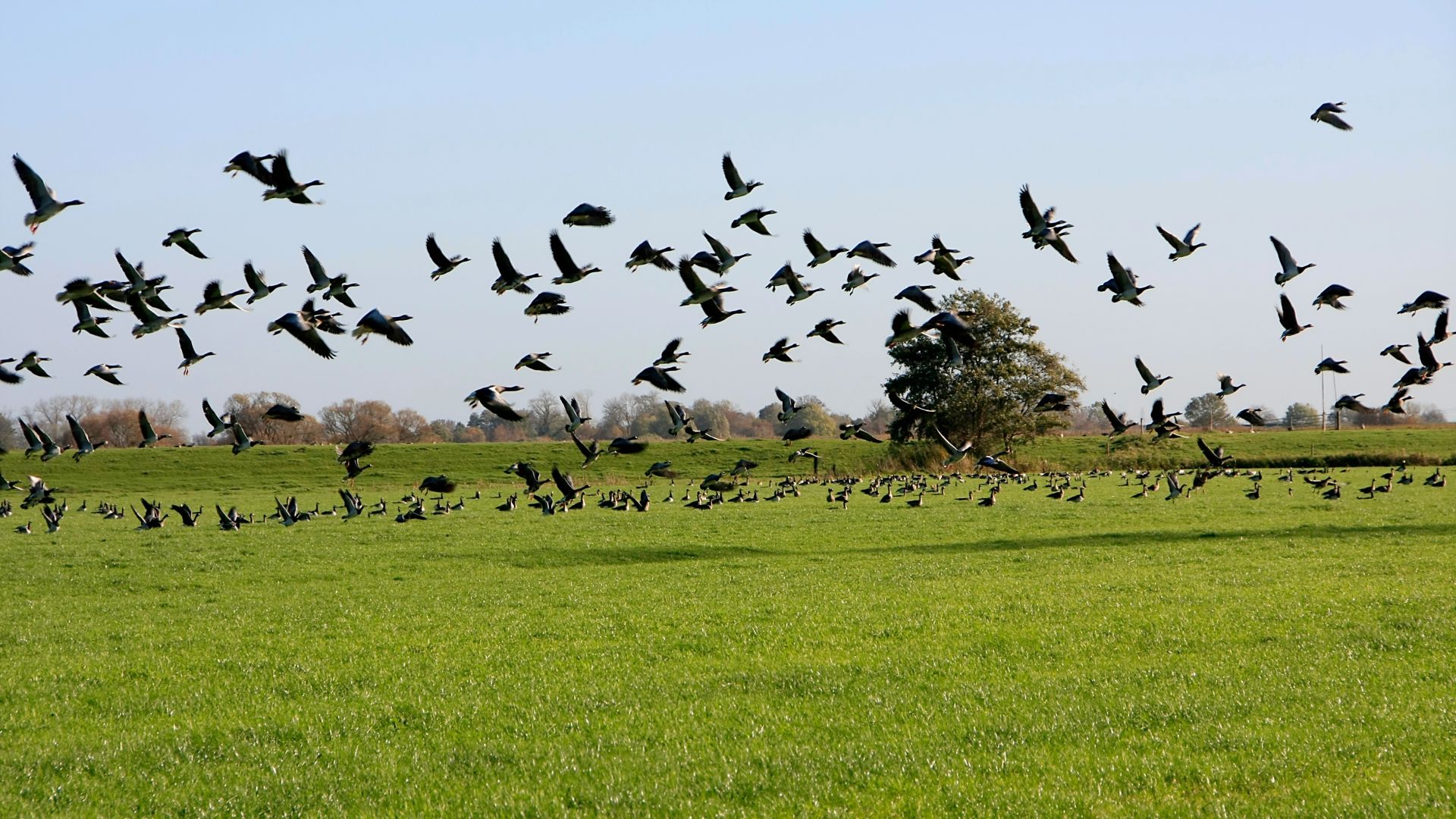 Harriersand: Rastende Graugänse auf der Weserinsel Harriersand im Sommer
©Adobe Stock (Klaus Nowottnick)
Harriersand: Rastende Graugänse auf der Weserinsel Harriersand im Sommer
©Adobe Stock (Klaus Nowottnick)
The Weser island of Harriersand lies opposite the harbour town of Brake and, at eleven kilometres long, is the largest river island in Germany. Here you can take a short boat trip or take the ferry to Brake for ice cream and even go camping there. Closer by and just as beautiful is the Kladdinger Wiesen nature reserve: the perfect place for a peaceful walk in enchanting nature.